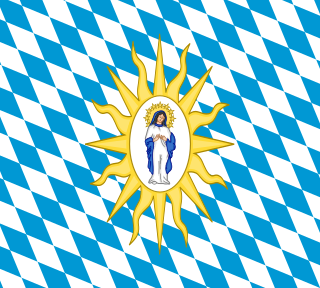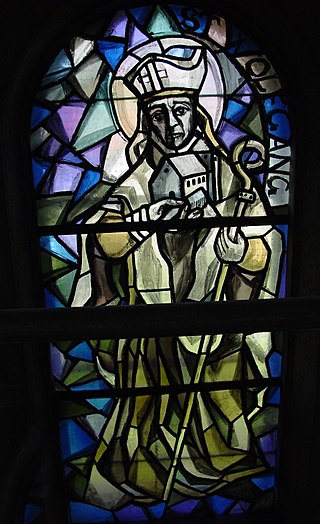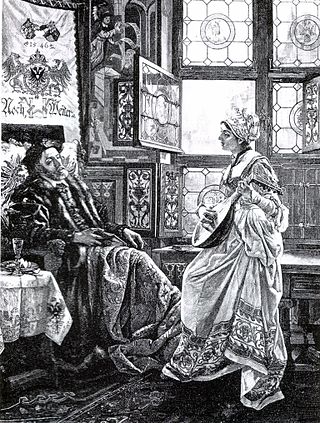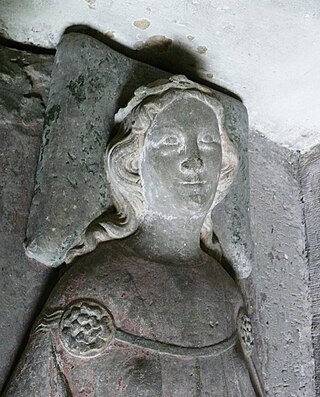Related Research Articles

Regensburg is a city in eastern Bavaria, at the confluence of the Danube, Naab and Regen rivers, Danube's northernmost point. It is the capital of the Upper Palatinate subregion of the state. With more than 150,000 inhabitants, Regensburg is the fourth-largest city in the State of Bavaria after Munich, Nuremberg and Augsburg and the 8th largest of all cities on the Danube river. From its foundation as an imperial Roman river fort, the city has been the political, economic and cultural centre of the surrounding region. Later, under the rule of the Holy Roman Empire, it housed the Perpetual Diet of Regensburg.

In the Holy Roman Empire, the collective term free and imperial cities, briefly worded free imperial city, was used from the fifteenth century to denote a self-ruling city that had a certain amount of autonomy and was represented in the Imperial Diet.

The Catholic League was a coalition of Catholic states of the Holy Roman Empire formed 10 July 1609. While initially formed as a confederation to act politically to negotiate issues vis-à-vis the Protestant Union, modelled on the more intransigent ultra-Catholic French Catholic League (1576), it was subsequently concluded as a military alliance "for the defence of the Catholic religion and peace within the Empire".

Wolfgang of Regensburg was bishop of Regensburg in Bavaria from Christmas 972 until his death. He is a saint in the Catholic and Eastern Orthodox churches. He is regarded as one of the three great German saints of the 10th century, the other two being Ulrich of Augsburg and Conrad of Constance. Towards the end of his life Wolfgang withdrew as a hermit to a solitary spot, in the Salzkammergut region of Upper Austria. Soon after Wolfgang's death many churches chose him as their patron saint, and various towns were named after him.

Nuremberg Castle is a group of medieval fortified buildings on a sandstone ridge dominating the historical center of Nuremberg in Bavaria, Germany.

German mediatisation was the major redistribution and reshaping of territorial holdings that took place between 1802 and 1814 in Germany by means of the subsumption and secularisation of a large number of Imperial Estates, prefiguring, precipitating, and continuing after the dissolution of the Holy Roman Empire. Most ecclesiastical principalities, free imperial cities, secular principalities, and other minor self-ruling entities of the Holy Roman Empire lost their independent status and were absorbed by the remaining states. By the end of the mediatisation process, the number of German states had been reduced from almost 300 to 39.
Scotus or SCOTUS may refer to:

Barbara Blomberg was the mother of Don John of Austria.

Saint Emmeram of Regensburg was a Christian bishop and a martyr born in Poitiers, Aquitaine. Having heard of idolatry in Bavaria, Emmeram travelled to Ratisbon (Regensburg) some time after the year 649 to the court of Theodo I, Duke of Bavaria. He supposedly travelled up the Loire, crossed through the Black Forest and then followed the Danube to Regensburg. Theodo welcomed Emmeram to his court, where he laboured for three years carrying out missionary work. During this time, he gained a reputation as a pious man. He died circa 652 and is buried in St. Emmeram's in Regensburg, Germany. His feast day in the Catholic Calendar of saints is September 22.
The Colloquy of Regensburg, historically called the Colloquy of Ratisbon, was a conference held at Regensburg (Ratisbon) in Bavaria in 1541, during the Protestant Reformation, which marks the culmination of attempts to restore religious unity in the Holy Roman Empire by means of theological debate between the Protestants and the Catholics.

Prince-provost is a rare title for a monastic superior with the ecclesiastical style of provost who is also a Prince of the Holy Roman Empire (Reichsfürst), holding a direct vote in the Imperial Diet assembly coequal to an actual Prince-abbot, as in each case treated below.
The Regensburg Interim, traditionally called in English the Interim of Ratisbon, was a temporary settlement in matters of religion, entered into by Emperor Charles V with the Protestants in 1541.

The Imperial Diet was the deliberative body of the Holy Roman Empire. It was not a legislative body in the contemporary sense; its members envisioned it more like a central forum where it was more important to negotiate than to decide.
The Diet of Regensburg was a meeting of the Prince-Electors of the Holy Roman Empire which occurred at Regensburg from July to November 1630. It resulted in a major loss of power for the Holy Roman Emperor Ferdinand II.

The Perpetual Diet of Regensburg or the Eternal Diet of Regensburg, also commonly called in English the Perpetual Diet of Ratisbon, from the city's Latin name, was a session of the Imperial Diet (Reichstag) of the Holy Roman Empire that sat continuously from 1663 to 1806 in Regensburg in present-day Bavaria, Germany. Previously, the Diet had been convened in different cities but, beginning in 1594, it met only in the town hall in Regensburg. On 20 January 1663, the Diet convened to deal with threats from the Ottoman Empire. Since the Peace of Westphalia in 1648, the Holy Roman Emperor had been formally bound to accept all decisions made by the Diet. Hence, out of fear that the Emperor would disregard the Diet's role by not calling sessions, it never dissolved and became a perpetual diet. Therefore, no final report of its decisions, known as a Recess, could be issued, and that of the preceding diet, issued in 1654, was dubbed the Youngest Recess. From 1663 until the 1684 Truce of Ratisbon, the diet gradually developed into a permanent body.
Gebhard III may refer to:

Saint Aurelia of Regensburg, also known as Aurelia of Ratisbon, is an 11th-century Roman Catholic German saint.
Conrad IV of Germany (1228–1254) was King of Germany from 1237 to 1254.
Agostino Patrizi Piccolomini was a Roman Catholic prelate who served as Bishop of Pienza (1484–1495) and Bishop of Montalcino (1484–1495).
Regensburg also called Ratisbon in English and Ratisbonne in French, a German city in Bavaria, south-east Germany